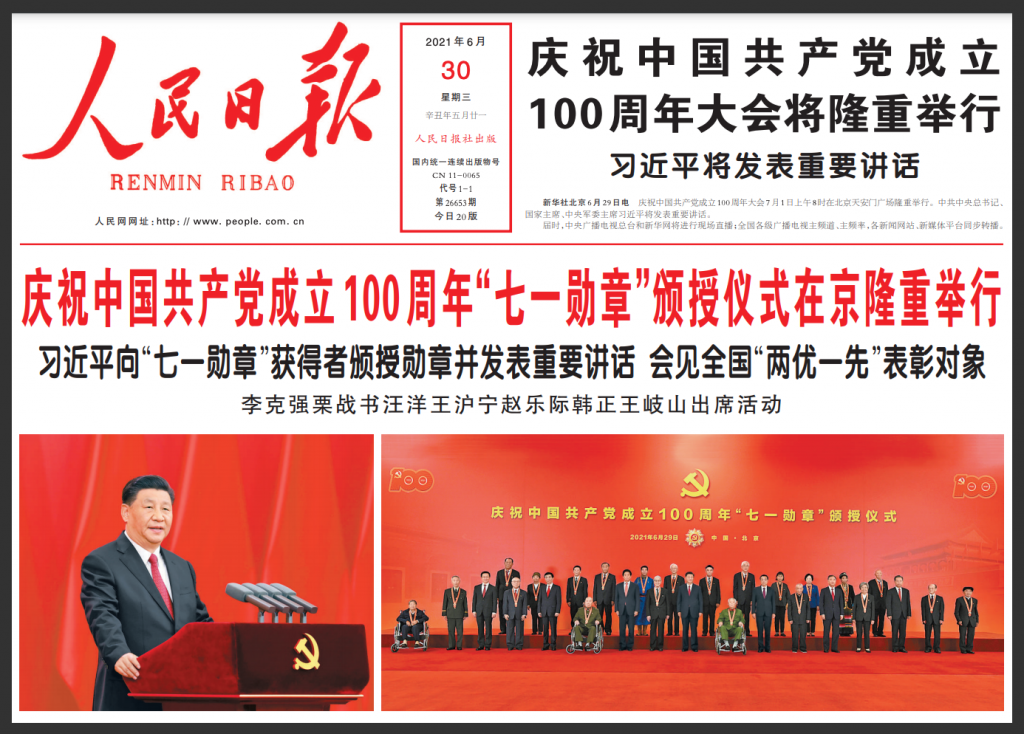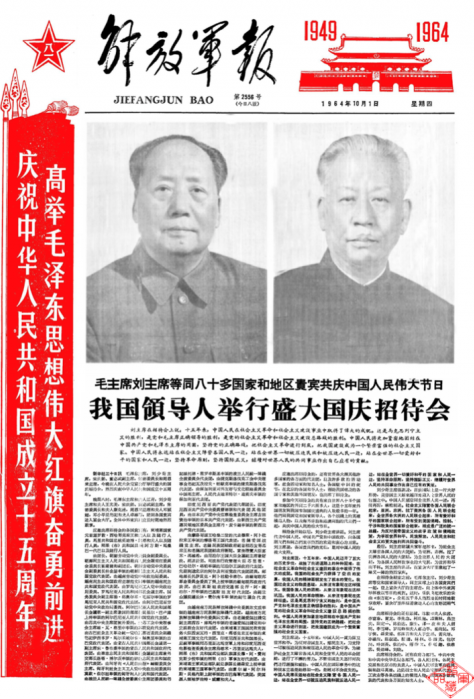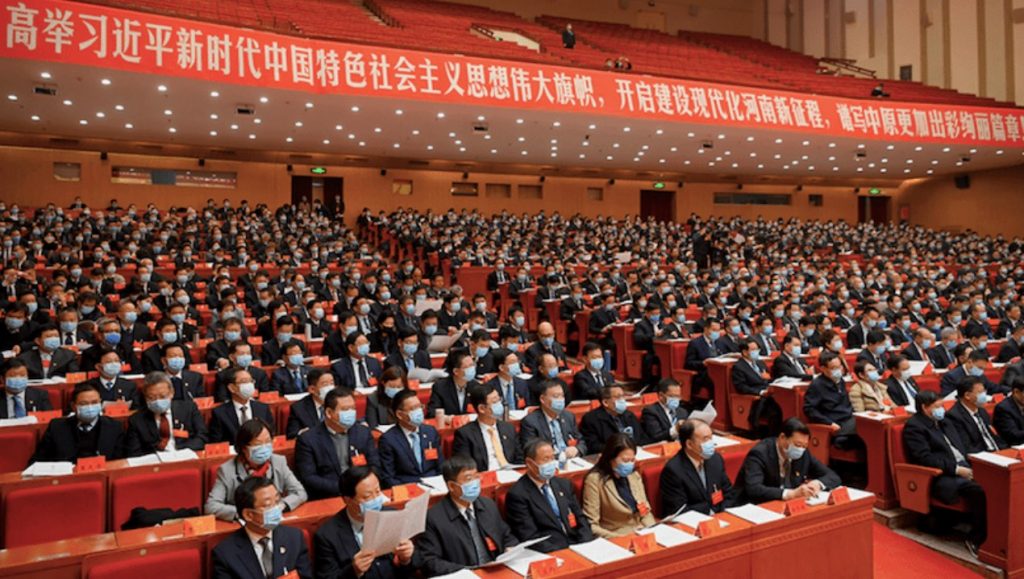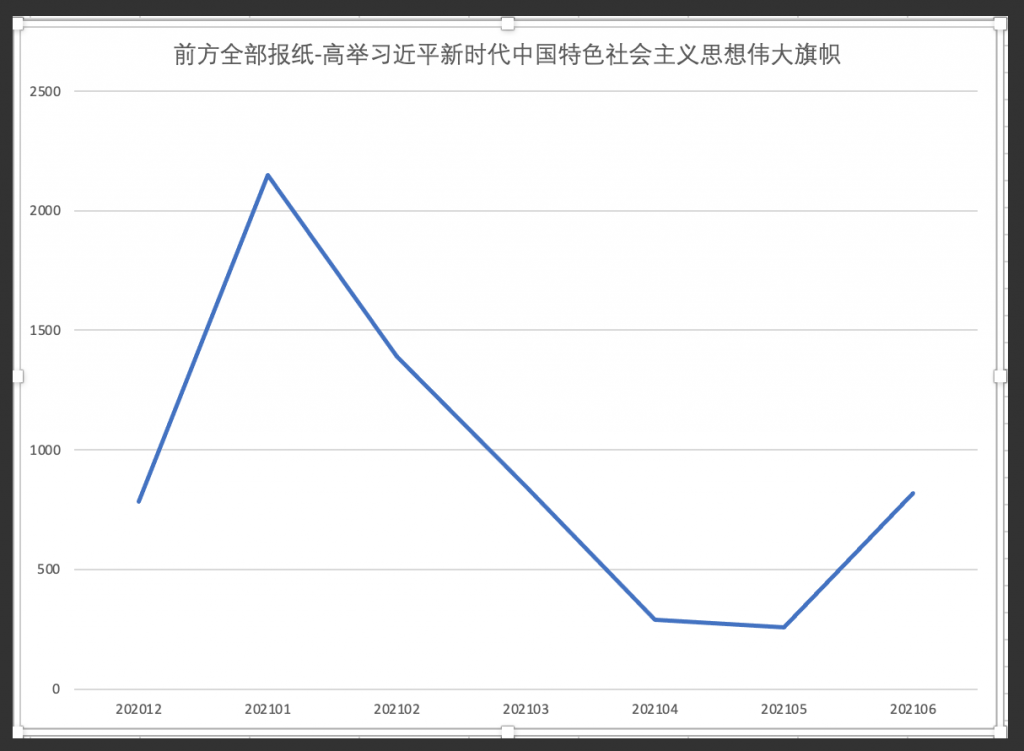China Newspeak
Raise the Banner High

As the Chinese Communist Party’s official People’s Daily newspaper informs the world with great fanfare today, the country’s top leader, Xi Jinping, will be delivering an “important speech” (重要讲话) tomorrow on Tiananmen Square.
Amid the flood of news and speculation about what the festivities will bring, we focus here today on just one key aspect to observe tomorrow as Xi Jinping takes the stage, and as media across China respond, online and offline, to what he has to say. Our question: How will Xi’s banner term, or qizhiyu (旗帜语), appear in coverage in the Party-state media, and what will that tell us about his present status?
The ultimate goal of Xi and his acolytes, as we have said previously, is to elevate Xi’s 16-character banner term, “Xi Jinping Thought on Socialism With Chinese Characteristics for the New Era” (习近平新时代中国特色社会主义思想), by abridging it as “Xi Jinping Thought” (习近平思想) and securing its position across the political and ideological landscape. This has not yet been accomplished, though abridged permutations in various policy areas, such as “Xi Jinping Thought on Rule of Law” and “Xi Jinping Thought on Diplomacy,” are steps along the path.
As things stand right now, the most common and accepted use of Xi’s banner term, which was added to the Party Charter in 2017, and to the Constitution in 2018, is the lengthy phrase “Guided by Xi Jinping Thought on Socialism with Chinese Characteristics for the New Era” (以习近平新时代中国特色社会主义思想为指导). The pattern here is essentially “with ________ as the guide” (以 ____ 为指导). This presentation of the banner term has been used quite regularly, as can be seen from this search, and is used in central-level media as well as local and regional media. But it does not pack the punch Xi would certainly like.

A second rather common use of the longer banner term is the phrase “Implementing Xi Jinping Thought on Socialism with Chinese Characteristics for the New Era” (贯彻习近平新时代中国特色社会主义思想), which can be seen in articles like this one from the People’s Daily, urging the study and implementation of Xi’s ideas, and in postings from various government ministries and central-level media.
Either of these first two versions of Xi’s legacy phrase might readily be seen tomorrow and in the days after, and in a wide range of media. But there is another phrase we should be alert for, one that could have greater implications as Xi turns to legacy formation and solidifying his political position ahead of the 20th National Congress of the CCP, to be held in late 2022. That phrase is the aggrandizing pattern, “raising high the great banner of _______” (高举_____伟大旗帜), in Xi’s case giving us the 22-character phrase “raising high the great banner of Xi Jinping Thought on Socialism With Chinese Characteristics for the New Era” (高举习近平新时代中国特色社会主义思想伟大旗帜).
That may seem like a mouthful, and counter-intuitive considering that Xi ‘s goal is to go in precisely the other direction, toward the powerfully abridged “Xi Jinping Thought.” But there is an important historical precedent here in banners raised high. The original form was of course Mao Zedong, whose “Mao Zedong Thought” (the banner term Xi most wishes to emulate) was frequently introduced in this way, as in this article in the People’s Daily right at the start of the Cultural Revolution. The phrase “raising high the banner of Mao Zedong Thought” was first used in Party media at the end of 1963, and it was taken up most enthusiastically by the People’s Liberation Army Daily, where it was a hot catchphrase in 1964 while remaining rare in the People’s Daily.

“Deng Xiaoping Theory” the only other banner term to include the top leader’s name before Xi achieved his own “crowning” (冠名) in 2017, was also referred to with this pattern from time to time, including by Jiang Zemin. But the “raising high” pattern has not been applied widely at the most senior levels to the banner terms of either of Xi immediate predecessors, Hu Jintao and Jiang Zemin.
“Raising high” has an unmistakable whiff of supremeness about it, which makes it an excellent extended phrase for local officials to use to signal their loyalty (表态) to Xi Jinping. And the supreme aura of the word also makes it a great candidate for testing the political waters as Xi continues his march toward “Xi Jinping Thought.”
Generally speaking, Xi Jinping’s banner term has appeared with the “raising high” pattern only at public CCP events at the local and regional level (counties, cities and provinces), often on physical banners strung across meeting halls. Below, for example, is an image of the provincial CCP meeting held back in December 2020 in Henan province, with a banner over the heads of the delegates to, well, raise high the banner of Xi’s banner.

An image search with the full “raising high” phrase” and “meeting” returns quite a broad cross-section of uses in recent months in years, nearly all meetings held at the city and provincial level, or below, either posting the banner at venues or including the full phrase in reports of the meeting.
So far, however, the phrase has not been used at the most senior levels, the closest examples being instances in the People’s Daily in which provincial leaders or other less senior officials have paid homage to Xi in the paper’s pages by using the phrase. But there seems to be a clear uptick in use of the phrase in newspapers across the country in June, based on a search of the Qianfang database. While use on a per article basis peaked back in January this year, surpassing 2,000, and fell to nearly 250 for May, the numbers this month are edging back up toward 1,000.

Six days ago, for example, Cui Aimin (崔爱民), Director General of the Consular Department at the Ministry of Foreign Affairs, wrote a piece for the Economic Daily in which he used the “raising high” phrase. Cui’s article was re-published by MOFA on its website. The phrase also appeared yesterday in Jilin Daily, the official mouthpiece of the CCP Committee in Jilin province, as it held a commendation event for the 100th anniversary.
It is possible, though by no means certain, that we could head into July with a surge in use of the “raising high” version of Xi Jinping’s banner term, and this could occur in tandem with greater use of the phrase at the central level. These things, of course, are difficult to foresee. Tomorrow, certainly, Xi Jinping will be riding high as July 1 brings the culmination of propaganda efforts for the year, a peak of triumphalism. But it has also been a rocky path for Xi’s legacy phrases, and the climb to “Xi Jinping Thought” could still be a long one.




















